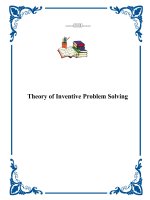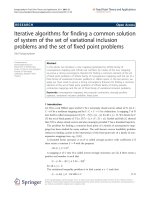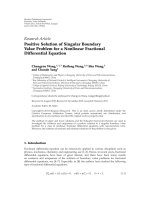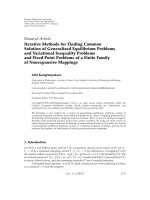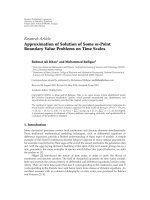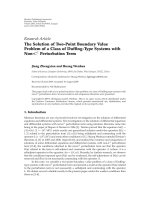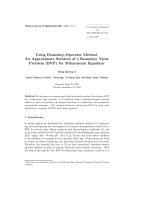Solution of traffic problem
Bạn đang xem bản rút gọn của tài liệu. Xem và tải ngay bản đầy đủ của tài liệu tại đây (1.01 MB, 3 trang )
How to reduce Traffic Congestion in cities
A side effect of an ever-increasing world population, traffic congestion is a major problem in
many cities worldwide. From encouraging carpooling to implementing intelligent traffic
management systems, we discuss how to reduce traffic congestion in cities for improved
movement efficiency.
Firstly, we need to promote the use of public transport. Public transportation systems like trains
and buses can carry large amounts of people, significantly reducing the umber of cars on the
road. Cities can reduce traffic congestion by making public transport more accessible and
attractive to commuters by lowering fares, increasing the frequency of vehicles, and improving
the service quality.
Secondly, the government can implement road pricing. Road pricing charges drivers according to
their use of roads, especially dủing peak hours. This can discourage drivers from using their cars
during congested times in favor of other forms of transportation, reducing the number of vehicles
on the road.
Thirdly, telecommuting or working from home can reduce traffic congestion in cities
significantly. By working remotely, employees do not need to commute to their workplace,
reducing the number of cars on the road. This method also brings benefits such as improved
work-life balance, reduced commuting costs, and lower carbon emissions.
Fourly, encourage carpooling is one of new measures. Commuters can cut down on the time they
spend driving their cars or forgo the need for personal vehicles entirely. Cities can reduce traffic
congestion by developing dedicated apps to facilities the process and offering incentives for
using them.
Finally, introducing smart infrastructure like the Smart Radar, which uses sensors for vehicle and
traffic tracking, can help improve traffic flow and reduce congestion. The data collected by this
intelligent traffic management system provides drivers with real-time information on traffic
updates and alternative routes to help them plan their journey more effectively.
